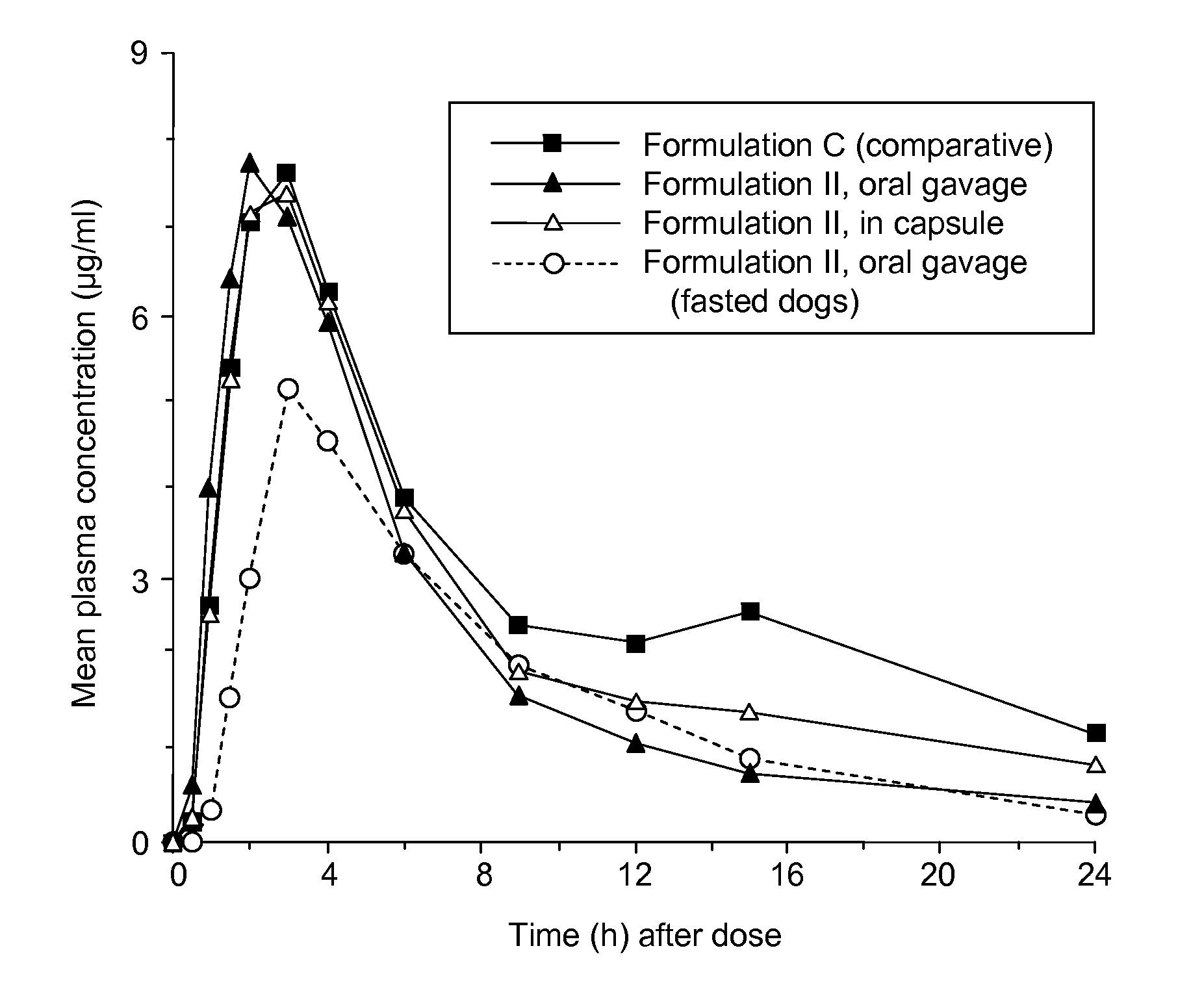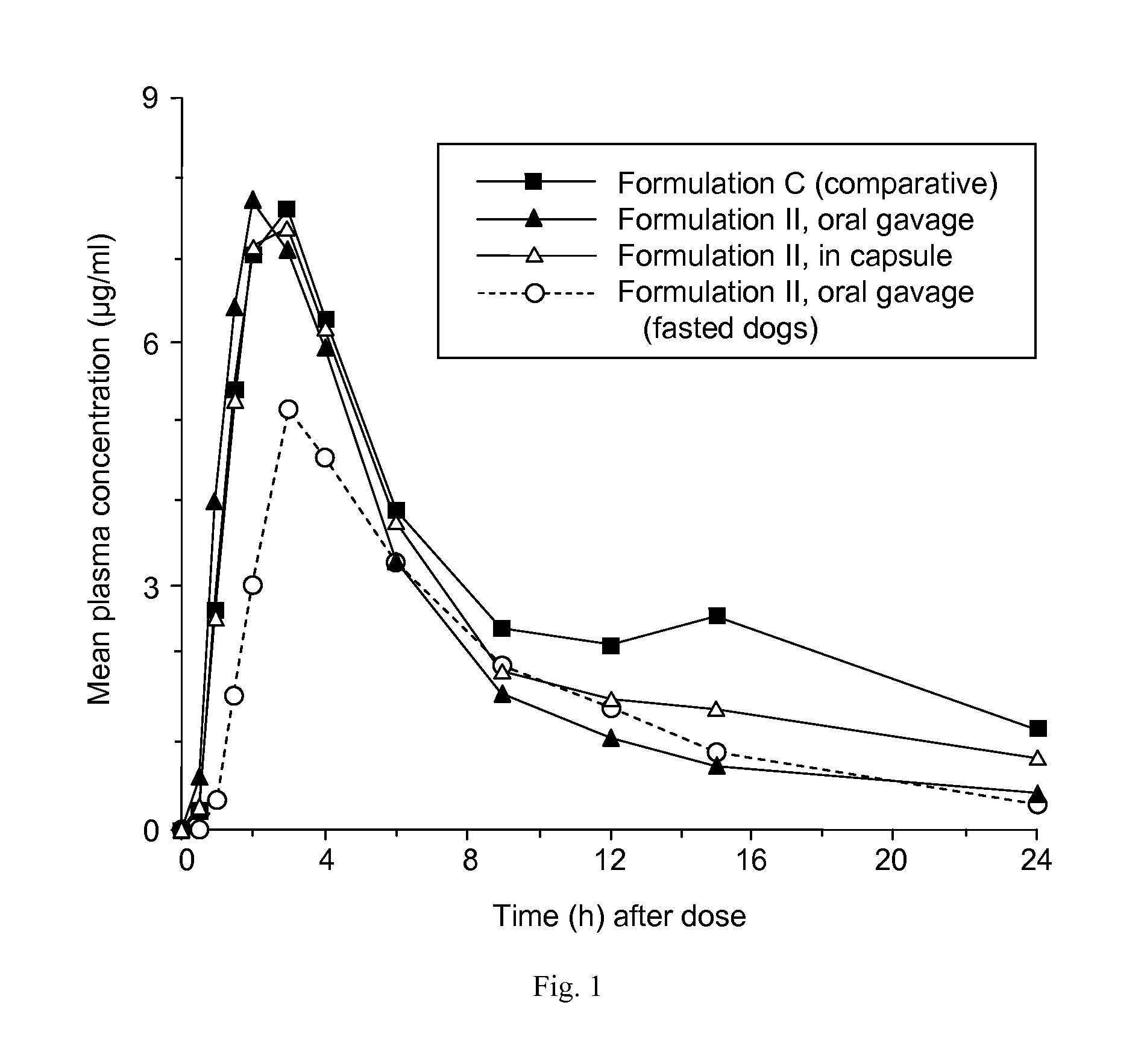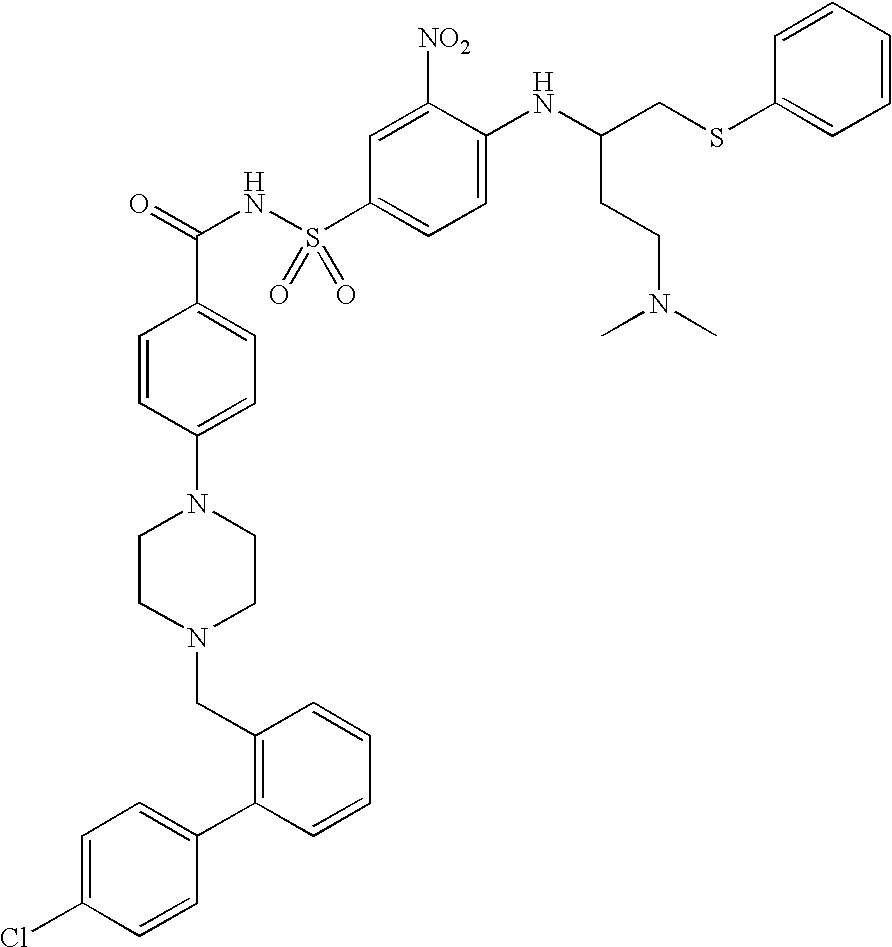Stable nanoparticulate drug suspension
a nanoparticulate and suspension technology, applied in the field of liquid suspension formulations, can solve the problems of reducing bioavailability, affecting the stability of suspension, and affecting the bioavailability of suspension,
- Summary
- Abstract
- Description
- Claims
- Application Information
AI Technical Summary
Benefits of technology
Problems solved by technology
Method used
Image
Examples
example 1
Preparation of an Illustrative Nanoparticulate Suspension
[0207]ABT-263 nanoparticulate suspension formulations were prepared by high-pressure homogenization as described below. The formulations had the following compositions (all percentages expressed as weight / volume) in water:
[0208]Formulation I (Comparative)
ABT-263 bis-HCl5% (4.65% free base equivalent)poloxamer 1883%
[0209]Formulation II (Illustrative of the Invention)
ABT-263 bis-HCl 5% (4.65% free base equivalent)poloxamer 188 3%NaHCO38.4%
[0210]Aqueous solutions were prepared containing the indicated amount of poloxamer 188 (Pluronic™ F68) and, in the case of Formulation II, sodium bicarbonate (NaHCO3). Crystalline ABT-263 bis-HCl in an amount sufficient to provide a 5% weight / volume (50 mg / ml) suspension was dispersed in each aqueous solution using a Sonifier™ homogenizer (Branson Ultrasonic, Danbury, Conn.). The resulting dispersion was then added to the sample reservoir of a Microfluidizer™ M-110L processor (Microfluidics I...
example 2
Effect of Sodium Bicarbonate on Particle Size Stability of Nanosuspensions
[0212]Formulations I and II were compared as to their particle size distribution (D90 and D50). Particle size measurement was performed immediately upon preparation of the suspensions (t=0) and after storage for 14 days at 5° C. In addition particle size was measured at t=0 for suspensions following dilution of 1 ml of each suspension in 20 ml 0.9% sodium chloride (NaCl) solution. Data are given in Table 1.
TABLE 1D90 and D50 particle sizes (μm)of nanosuspension Formulations I and IIFormulation IFormulation II(no NaHCO3)(8.4% NaHCO3)D90D50D90D50t = 01.1260.4900.6050.29114 d at 5° C.1.2140.5700.6210.295t = 0 in 0.9% NaCl1.7120.8860.5960.295
example 3
Pharmacokinetics of an Illustrative Nanosuspension
[0213]Single-dose pharmacokinetics of Formulation II of Example 1 were evaluated in non-fasted beagle dogs (n=4) after a 5 mg / kg oral dose. The formulation was administered in two ways: by oral gavage and in a capsule. Formulation II was also administered to histamine-pretreated fasted dogs (n=4), by oral gavage only. For comparative purposes, a solution formulation of ABT-263 bis-HCl in a lipid medium (Formulation C, prepared from ABT-263 bis-HCl powder dissolved to a concentration of 25 mg / ml in a 90:10 mixture of Phosal 53 MCT™ and ethanol) was administered to non-fasted dogs. Formulation C has been used to evaluate ABT-263 in clinical studies. Phosal 53 MCT™ is a proprietary blend supplied by Phospholipid GmbH and contains 53% phosphatidylcholine and 29% medium chain triglycerides.
[0214]Serial heparinized blood samples were obtained from a jugular vein of each animal prior to dosing and 0.25, 0.5, 1, 1.5, 2, 3, 4, 6, 9, 12, 15 an...
PUM
| Property | Measurement | Unit |
|---|---|---|
| Time | aaaaa | aaaaa |
| Time | aaaaa | aaaaa |
| Mass | aaaaa | aaaaa |
Abstract
Description
Claims
Application Information
 Login to View More
Login to View More - R&D
- Intellectual Property
- Life Sciences
- Materials
- Tech Scout
- Unparalleled Data Quality
- Higher Quality Content
- 60% Fewer Hallucinations
Browse by: Latest US Patents, China's latest patents, Technical Efficacy Thesaurus, Application Domain, Technology Topic, Popular Technical Reports.
© 2025 PatSnap. All rights reserved.Legal|Privacy policy|Modern Slavery Act Transparency Statement|Sitemap|About US| Contact US: help@patsnap.com



